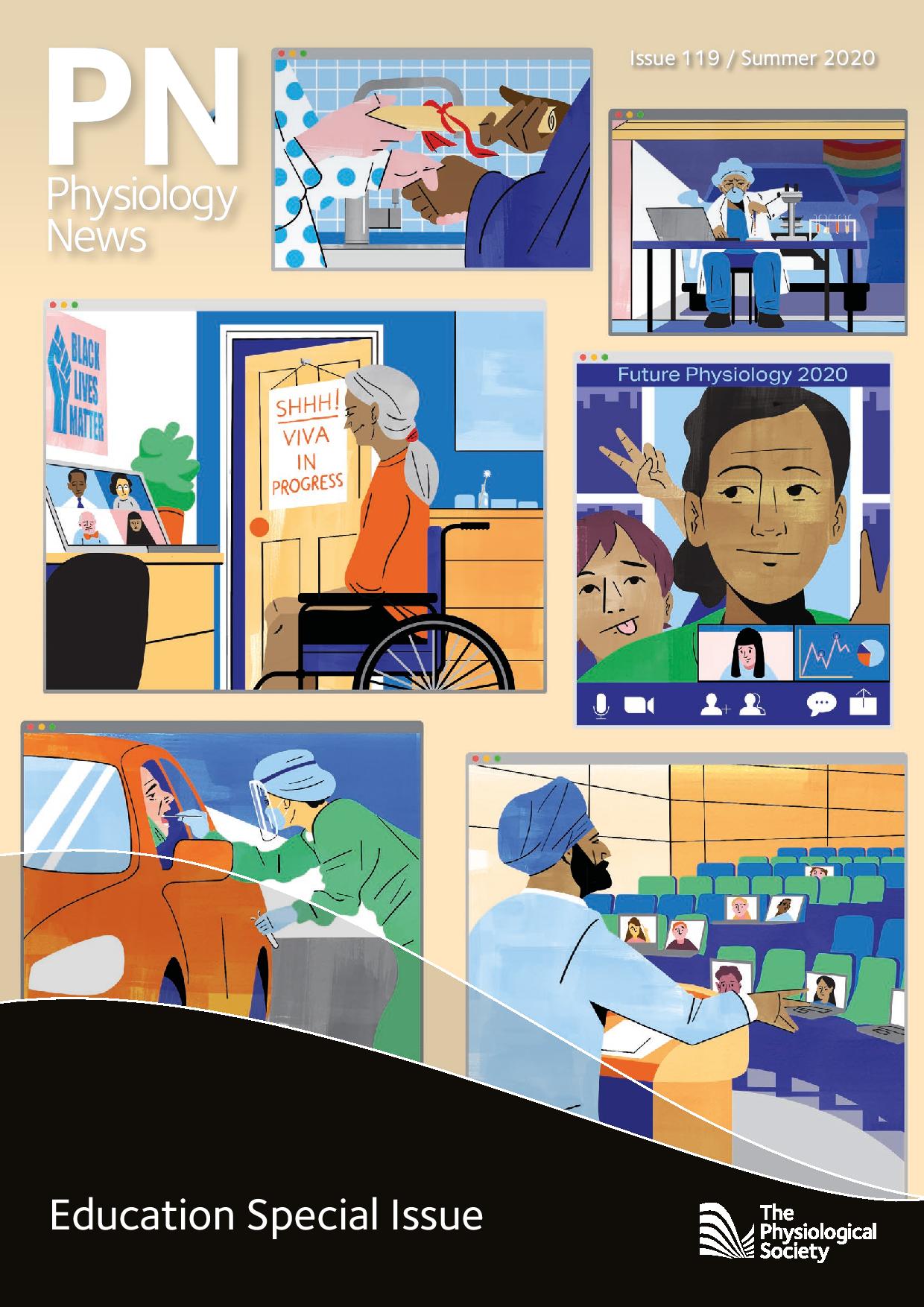
Physiology News Magazine
Delivering a high-quality practical education remotely
News and Views
Delivering a high-quality practical education remotely
News and Views
Dave Lewis, University of Leeds, UK
https://doi.org/10.36866/pn.119.13
Given the current COVID-19 situation, it is highly likely that teaching laboratories will not be open at the start of the upcoming academic year. When they do open, there will be social distancing and health protection measures in place which will limit both the numbers of students in the laboratory at any one time (up to 75% reduction in capacity), and also the types of practical (e.g. human cardio-respiratory physiology studies) we can offer. We also need to cater for students who can’t physically be present for health or other reasons.
The QAA Biosciences Benchmark Statement requires students “to undertake appropriate practical education throughout their course.” Similarly, the Royal Society of Biology Degree Accreditation criteria for BSc programmes requires “the acquisition of technical skills and familiarity with the practical environment.” We cannot opt out of providing practicals just because of the COVID-19 pandemic and therefore what are the alternatives? Options include the replacement of existing practicals with others that are “do-able” in the current environment, video demonstrations, virtual field trips, provision of data sets, simulations, virtual reality and 2nd Life (virtual worlds). Which, if any, of these is a valid alternative? Do any provide a high quality, engaging and enjoyable educational experience? To address that question, we first have to consider why we provide practicals. Reasons could include:
- Giving students hands-on experience of experimental techniques and the development of laboratory skills;
- Reinforce knowledge and understanding gained from other educational activities;
- Education in, and experience of, experimental design;
- Education in, and experience of, data analysis and interpretation;
- Development of critical thinking, creativity, problem solving, communication and team working skills;
- Fostering the development of collaborative learning networks.
Modification of existing practicals so they can be undertaken in alternative environments (e.g. human exercise physiology studies outside) would enable all of these learning outcomes to be achieved. Use of publically available webcams to address research questions involving humans, animals or the environment is another robust alternative. However, video demonstrations of practicals, virtual reality and 3rd Life are unlikely to provide an engaging and high quality educational experience alone. They could be used to reinforce knowledge and understanding gained from other educational activities, but to achieve the other learning outcomes, would have to be packaged with other activities, for example the analysis and interpretation of existing datasets (including those available at: https://bit.ly/OADataRep). This leaves simulations. Those currently available to educators range from the complex (and costly) human patient simulators (used extensively in medical and health sciences education) to computer or web-based simulations of organs, tissues, cells or even biological processes. Long gone are the days of slow simulations of dubious validity. There are many high quality, scientifically robust simulations and models available, increasingly being used both in research and drug development. In a project part-funded by a British Pharmacological Society Teaching Grant, I am collating simulations from across the world that can be used in Bioscience education. This is a living list, available at: https://bit.ly/e-BioPracticals which will be updated regularly. If you know of any additional simulations, either free or commercially available, please send me details (d.i.lewis@leeds.ac.uk) and I will add them. Given our need for alternatives to practicals is immediate, this list does not contain any evaluations. These will be added at a later date.
Used appropriately, simulations can address all the learning outcomes for practicals except hands-on practical experience. They have much greater potential than just a short-term replacement. At Leeds, we are replacing our Level 4 and 5 (undergraduate year 1 and 2) recipe-driven practicals with semester-long team-based mini-projects using simulations (e.g. of neurones or isolated tissues), giving students experience of experimental design, hypothesis testing, data collection, analysis and interpretation of large datasets. Simulations enable students to address research questions that could not be addressed in real-life for legal, ethical or health and safety grounds. Going forward post-COVID, we can use them as pre-practical learning activities for students to design studies and test hypotheses so that when they go into the laboratories they are fully aware of experimental set-ups and protocols and know what they are looking for, for example modification of ion channels in simulations of single neurones followed by real-life electrophysiological recordings in snail brain or other invertebrate preparations.
In short, it is time to ditch those dated, dusty practicals, broaden our expectations and learning outcomes, embrace technology and adopt a more blended approach to practical education. In so doing, better prepare our students for the remainder of their programmes and for their future careers, whatever these may be.
Dave Lewis is Senior Lecturer in Pharmacology & Scientific Ethics at the University. His interests include developing and evaluating non-traditional formats for undergraduate final year Capstone projects, and the development and delivery of professional education in research animal sciences in the Emerging World. Dave has previously been awarded The Society’s Otto Hutter Teaching Prize and is an AdvanceHE National Teaching Fellow.
